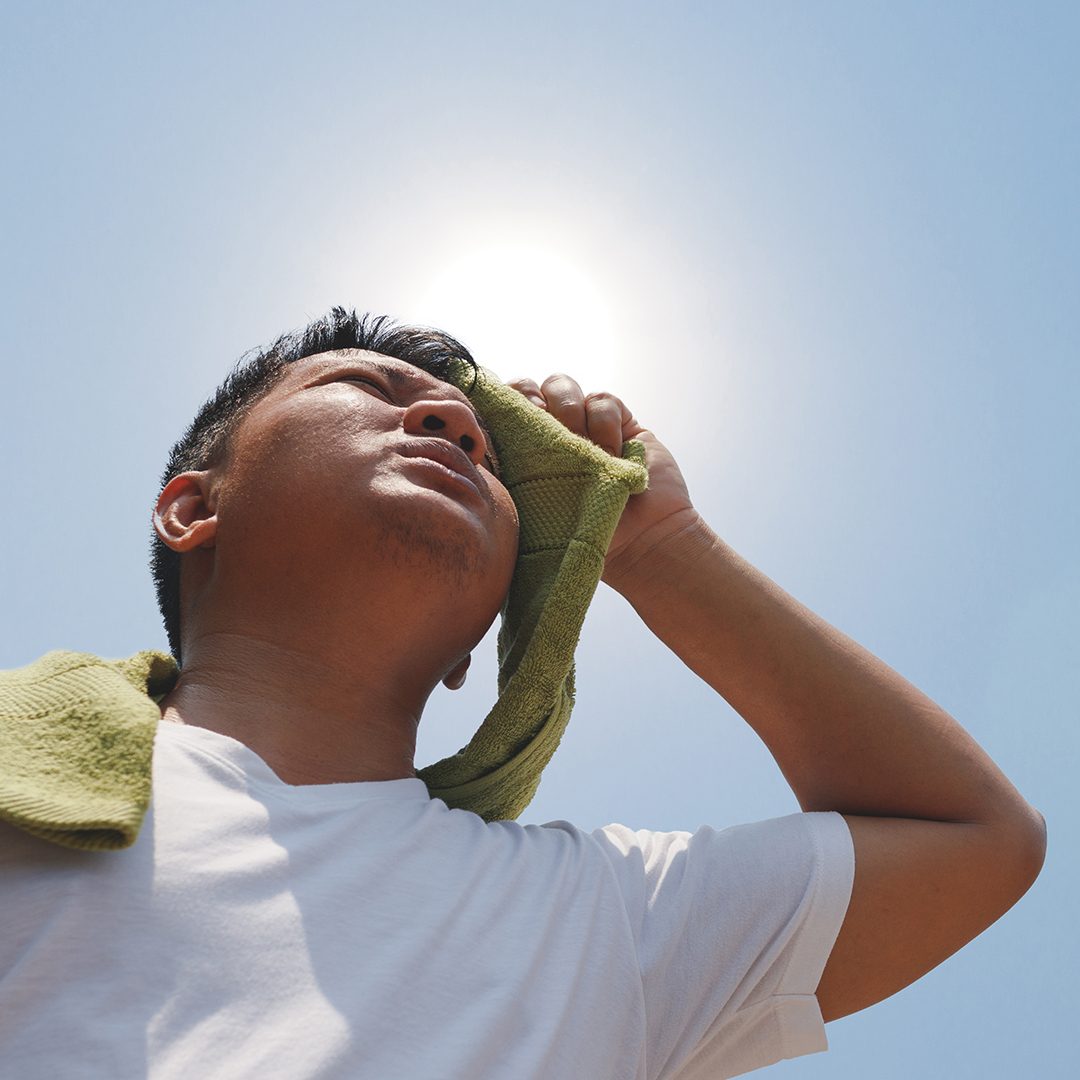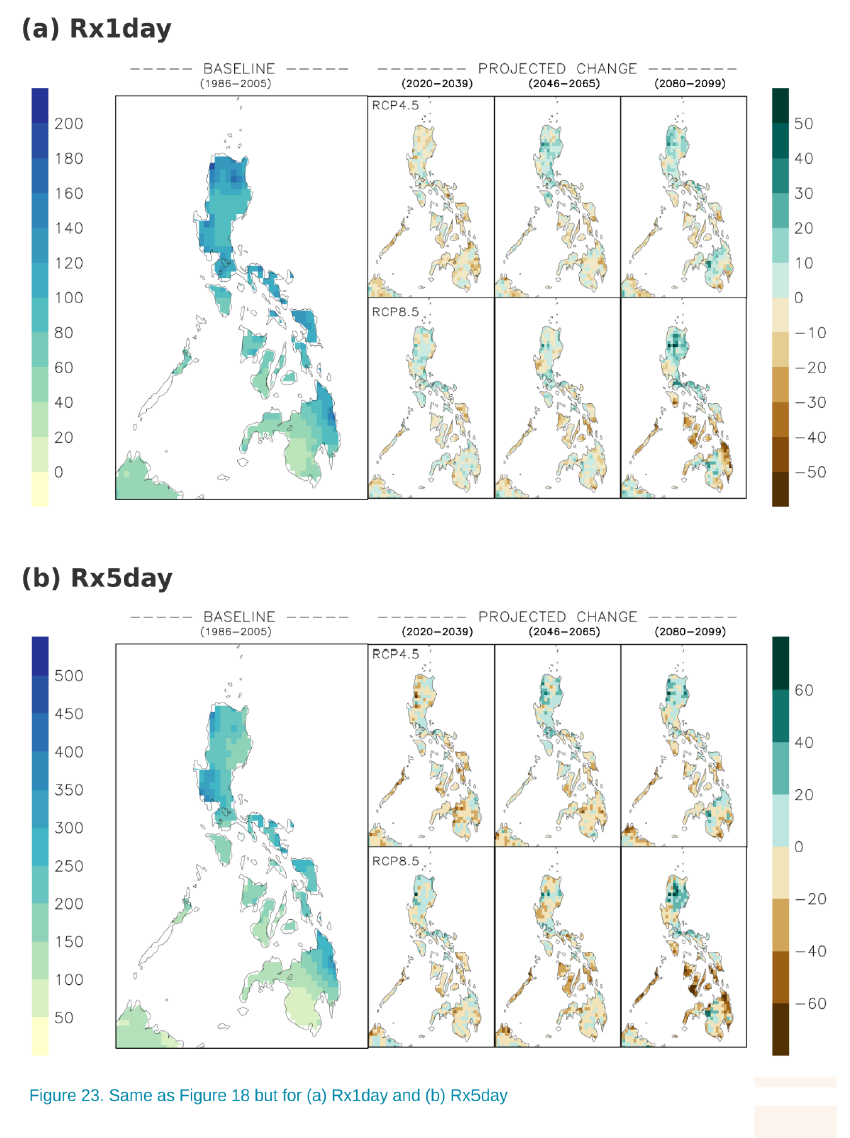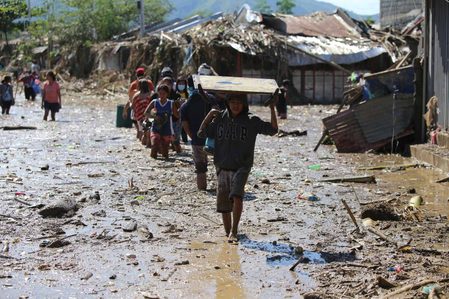SUMMARY
This is AI generated summarization, which may have errors. For context, always refer to the full article.

A new report shows the Philippines will possibly experience entire years of hot days 60 to 80 years from now if the world fails to cut planet-warming emissions now.
The report called the Philippine Climate Extremes Report 2020, was launched last Friday, November 26. It is the work of scientists and experts from the Manila Observatory, Ateneo de Manila University and Department of Science and Technology (specifically the Philippine Atmospheric, Geophysical and Astronomical Services Administration or PAGASA). Get the report here.
The report used climate models localized using Philippine-specific data and then projected across three 20-year slices – 2020 to 2039 period (early future), 2046 to 2065 period (mid future), and 2080 to 2099 (late future).
The projects were based on two scenarios – the RCP4.5 or moderate emission scenario in which the world is able to limit its greenhouse gas (GHG) emissions, and the RCP8.5 scenario or high emission scenario where emissions go unchecked.
Hot days ahead for our children
According to the report, toddlers today will suffer entire years of hot days in their 60s to 80s.
“The projected changes are all towards longer duration warm spells. From the usual maximum of 6 to 20 consecutive warm days, we can expect an addition of at least 60 days long warm spells in the mid-future and as long as the whole year in the far future in the RCP8.5 scenario,” said Manila Observatory’s Francia Avila, a climate scientist who helped write the report.

A warm spell means that for at least 6 straight days the daily maximum temperature exceeds the average previously recorded for that period.
What it means for Filipinos
The report says this finding on the duration of warm spells is one of its most alarming conclusions.
“While many systems can probably recover from short duration extremes (for example, a week-long warm spell), long-duration extremes would call for more radical measures of adaptation,” says the report.
Year-long or even several years of warm spells could mean shifting farming schedules in all the agriculture-based regions to wait for cooler weather. It might require farmers to work at night when it’s cooler or using climate-controlled farming technologies which require major investment.
More electricity would have to be used for cooling systems, like airconditioning, leading to a demand for more energy-efficient buildings.
Dry spells could mean more water service interruptions and less efficient hydroelectric powerplants.
Doctors and social services will have to consider health impacts of hotter days on people, especially the poor who lack access to airconditioning or who could suffer from heat stress.
Hotter temperatures could also mean more dengue cases since models suggest that every one-degree-Celsius increase in temperature triggers a ten-fold increase in mosquito population.
Things are dire for rice-producing regions since rice is extremely sensitive to heat. Studies show that there is a 5% to 7% reduction in rice yield for every one-degree-Celsius rise in mean daily temperature.
“The longer duration of high temperatures given WSDI (Warm Spell Duration Index) suggests rice paddy yield loss, as evidenced in China, where temperatures of 39 degrees Celsius for a duration of 10 to 20 days led to a yield reduction of 5.18 million tonnes,” reads the report.
The projections for Nueva Ecija, a province in major rice source Central Luzon, showed that the year-long warm spell could happen as early as 2046, if nothing is done about global emissions today.
Such long warm spells in the 2080 to 2099 period could happen even if the world manages to somewhat reduce greenhouse gas emissions, or in the RCP4.5 scenario.
Metro Manila, the country’s densely populated capital, faces the same future. The data also shows that, from around 11.6% of days (or 42 days) in a year being “hot days,” the fraction could go up to 90.6% or almost the entire year in 2080 to 2099.
This could have implications on outdoor exercise, al fresco activities, and spending on airconditioning and other cooling technologies.
What would this mean for cities trying to combat COVID-19 or similar diseases by promoting open-air activities or better-ventilated indoor spaces?
Findings on rainfall
Along with more warmer days ahead, the climate extremes report also predicts a future with less rainy days. But what rainy days there could be might be stronger in intensity than what is known historically.
“Historically, most of the country gets at least a 10-day long wet spell each year while some areas get as long as 25 to 30 day wet spells. In the future, these wet days are expected to decrease by at least four days, and for some areas by as much as 20 days,” said Avila at the launch.

But findings for rainfall were less uniform than for heat, with some areas expected to actually have longer wet spells than what they are experiencing today.
Models also show that while there may be fewer rainy days, some areas, notably Luzon, could see an increase in the amount of rain fall on an extremely wet day while a decrease of the same would be seen in Mindanao and the Visayas.
Parts of Luzon could see an up to 200-milimeter increase in the amount of rain fall on an “extremely wet” day in both moderate emission and high emission scenarios, for the 2046-2065 period and 2080-2099 period.
Meanwhile, parts of Visayas could see more than a 200-milimeter drop in rainfall on “extremely wet days” in the high-emission scenario in 2080 to 2099.
“The projected changes indicate a general drying trend but also the occurrence of extreme rainfall events in many areas. Prolonged wet events tend to decrease, but prolonged dry events also show localized decreases, indicating possibilities of increased frequenty of wet days in the future which would interrupt the long-duration dry events,” reads the report’s summary.
Together with the report, DOST-PAGASA put up the Climate Information Map on its website. The interactive map allows any user to view climate data down to the provincial level. – Rappler.com
Add a comment
How does this make you feel?

There are no comments yet. Add your comment to start the conversation.